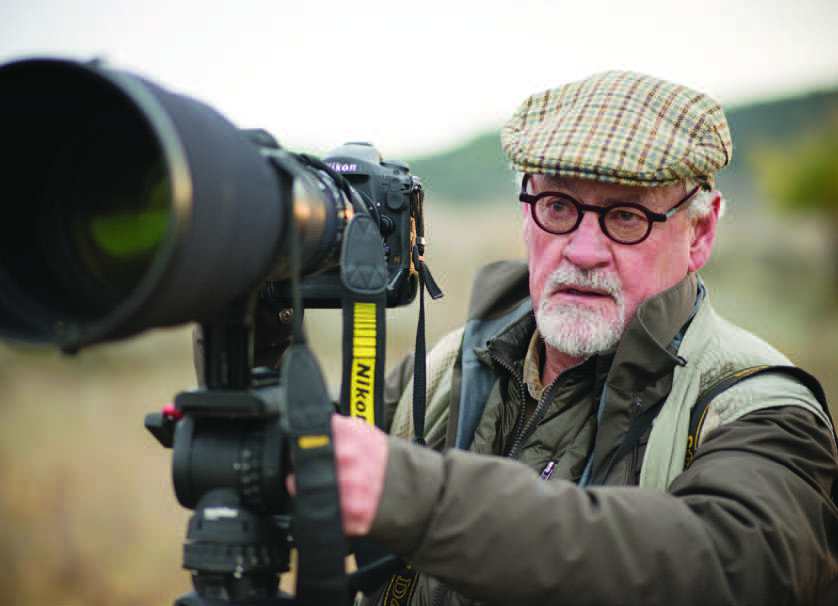Read The
Current Issue
Tom Mangelsen
Meet the Locals
INTERVIEW BY JOSEPH SHELTON

You’ve almost certainly seen Tom Mangelsen’s work even if you don’t know his name. Mangelsen is one of the most prolific wildlife photographers working today. His image, Catch of the Day—a sockeye salmon leaping into the waiting jaws of an Alaskan brown bear—has been reprinted thousands of times. It, along with dozens of other Mangelsen photos, is sold at Mangelsen’s Images of Nature Gallery, which has eight locations across the country, including here in Jackson on North Cache St., and also Park City, Utah; La Jolla, California; and Denver, Colorado. Beyond bears in Alaska, Mangelsen has photographed sandhill and whooping cranes in Platte River, Nebraska, bull moose in Denali, and polar bears on the Hudson Bay’s mud flats, and his images have appeared in National Geographic magazine, at the Smithsonian, and in The New York Times. His eleventh book, The Last Great Wild Places: Forty Years of Wildlife Photography by Thomas D. Mangelsen, came out this fall. Jane Goodall, who Mangelsen has worked with on several occasions, wrote the introduction.
Q: Favorite local places to shoot?
A: Oxbow Bend, Gros Ventre River, and Snake River Canyon. They’ve got scenic value and an abundance of wildlife, including in the winter.
Q: What about further afield?
A: The Serengeti in Tanzania is my favorite, also Antarctica and South Georgia Island, Hudson Bay, Alaska, and India.
Q: Ever had any close encounters?
A: A grizzly bear surprised me while I was taking a bath in Igloo Creek in Denali National Park, then stalked me as I slowly retreated buck naked. Fortunately he paused to eat my soap as I snuck away.
Q: That’s exciting. What about boredom? We imagine you’ve got to wait for a lot of shots.
A: I don’t like dwelling on time being wasted. Those times are part of the bigger picture—learning experiences that eventually add to capturing moments I wouldn’t have gotten without all those hours of observation.
Q: Any examples of waiting it out?
A: In 1999 a family of mountain lions—a mother and three kittens—showed up in a cave on the National Elk Refuge. I spent forty-two days trying to capture a few good images of them.
Q: And?
A: The images illustrate a book and film, written by Cara Blessley Lowe, called Spirit of the Rockies.
Q: Those forty-two days led to more than a book and movie, though, right?
A: As Cara and I learned more about the atrocities of sport hunting cougars, we founded the Cougar Fund in 2000.
Q: And cougars were one of the species that you never thought you’d get a chance to photograph, right?
A: Yes. Ninety-nine percent of cougar photos are of game farm animals, and I refuse to use game farm animals.
Q: Why?
A: Game farms are places where wild animals are kept and often bred in captivity. Animals at these farms exist for only one reason: to be used as “models.” Cages are far too small for animals’ health and welfare, and the animals are often shipped by semi trucks across the country. It is cruel and inhumane. The images are often passed off as real moments. Game farms have harmed animals and the profession.
Q: Legend has it you used to be a hell of a bird caller. True?
A: I was twice the “World Goose-Calling Champion.” Every once in a while I’ll get together with old hunting buddies, and we will call ducks or geese sitting at the kitchen table over a beer. I still have it—like riding a bike.





